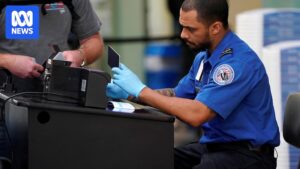
Researchers at Queensland University of Technology (QUT) are spearheading the development of navigation systems for Australia’s inaugural lunar rover, ensuring it remains on course when it touches down on the Moon towards the end of this decade. This initiative is part of the Australian consortium ELO2, where QUT’s experts in robotics and planetary science are tasked with creating positioning systems to assist the semi-autonomous rover in safely exploring the lunar surface, despite its limited onboard computing power.
Affectionately named Roo-ver, the rover is set to be designed, built, tested, and operated in Australia through a collaboration of industry partners, research organizations, and ten universities, in partnership with the Australian Space Agency. Once launched, Roo-ver will be remotely operated from an Australian mission control center, working alongside NASA to establish a sustainable human presence on the Moon.
QUT’s Cutting-Edge Facilities and Expertise
The work at QUT is led by Associate Professor Thierry Peynot from the QUT Centre for Robotics. It leverages the university’s newly launched Yandiwanba facility, the largest covered testing environment in Australia for field robotics and equipment under realistic lunar conditions. Yandiwanba, a Yugara word meaning ‘to go from the ground to a higher place’, was developed by a large QUT team led by Professor Peynot and houses a 19m x 11.4m lunar test bed filled with lunar regolith simulant.
“Yandiwanba allows us to recreate the challenges of lunar exploration here on Earth, so we can trial and refine the systems that will eventually guide Roo-ver on the Moon,” Professor Peynot said.
Professor Peynot emphasized the focus on using the lander as a landmark to guide the rover during the mission while utilizing limited resources. The team will also explore visual object detection to identify rocks, craters, and other phenomena of interest.
Challenges of Lunar Navigation
Professor Michael Milford, Director of the QUT Centre for Robotics, expressed the team’s excitement about participating in this groundbreaking initiative. “Obviously, the Moon presents an environment unlike anywhere on Earth,” he noted. “QUT’s world-class robotics expertise, especially in areas like robotic vision and navigation technologies, is a key capability we bring to the challenge of navigating on the Moon.”
“There are no GPS satellites, the terrain is harsh, and computing resources are limited. Our team is working on new approaches to robotic vision, scene understanding, and localization that will help keep Roo-ver safe and on course,” Professor Milford added.
ELO2 and Roo-ver Mission Director Ben Sorensen highlighted the importance of QUT’s involvement, stating that the university’s world-class testing facilities in Brisbane are matched by the expertise of their robotics researchers. “Navigating the terrain of the lunar surface – 384,000 kilometers away – is an incredibly complex task, and the work Professor Peynot and his team are undertaking on Roo-ver’s navigation systems will be vital to the mission’s success,” Sorensen said.
Broader Implications and Future Prospects
Professor Milford also pointed out the parallels between operating on the Moon and in extreme environments like Antarctica. The center’s teams have operated drones and submersible robots as part of the Securing Antarctica’s Environmental Future initiative, showcasing their adaptability and expertise in challenging conditions.
The QUT team also includes Professor Niko Suenderhauf and Dr. Dimity Miller from the QUT Centre for Robotics, along with Associate Professor David Flannery from the QUT School of Earth and Atmospheric Sciences. The Australian Government has committed $42 million through the Australian Space Agency to this phase of the mission, building on the nation’s recognized strengths in robotics, automation, remote operations, engineering, science, and advanced manufacturing.
Currently, QUT is attending the 76th International Astronautical Congress (IAC) in Sydney, which runs from 29 September to 3 October, further solidifying its role in the global space exploration community.





